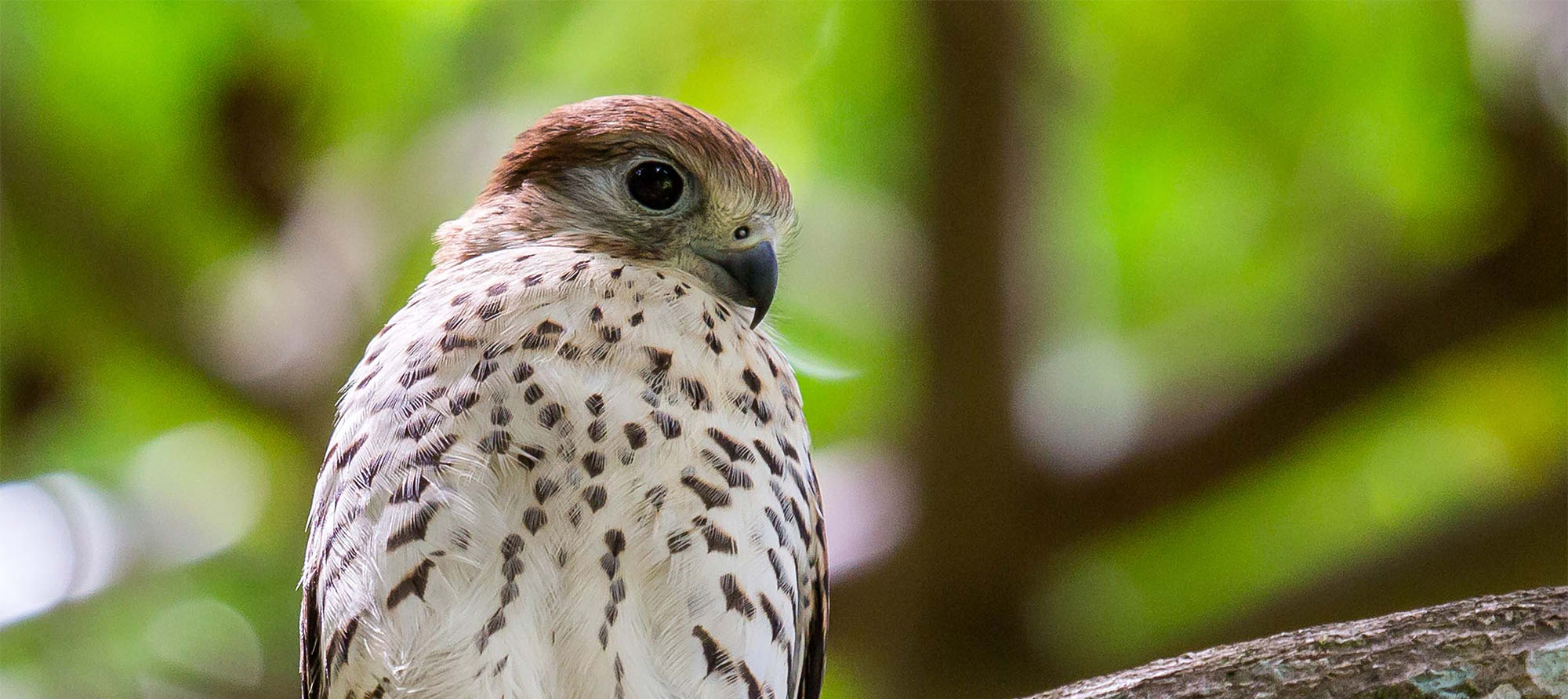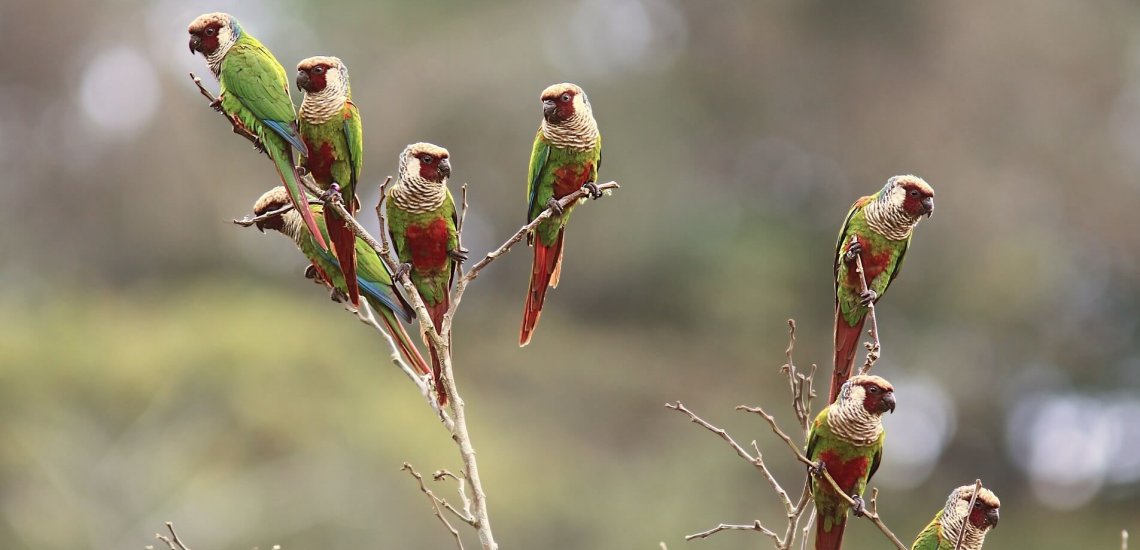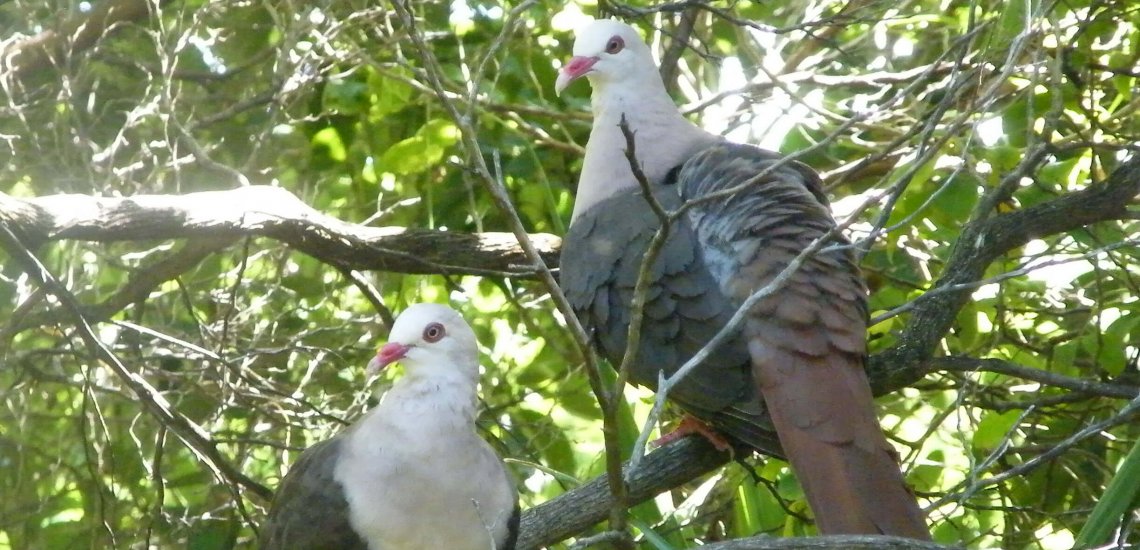No longer Endangered: the Echo Parakeet’s 100-year recovery plan
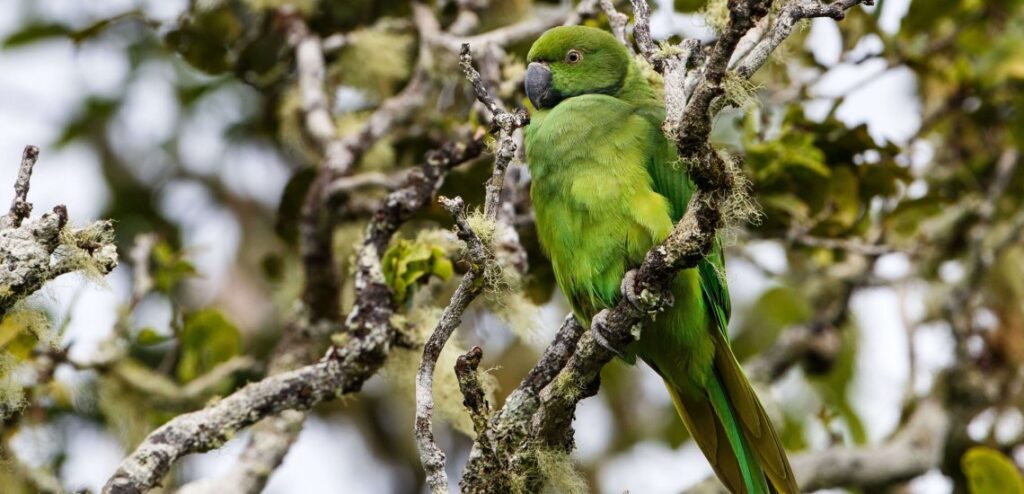
In this year’s Red List update, the Echo Parakeet moved from Endangered to Vulnerable – an impressive recovery for a species that once numbered just a dozen birds. But successes like this aren’t built in a day, or even a decade. Find out how Mauritius’ conservationists made it happen.
In this year’s Red List update, the Echo Parakeet moved from Endangered to Vulnerable – an impressive recovery for a species that once numbered just a dozen birds. But successes like this aren’t built in a day, or even a decade. Find out how Mauritius’ conservationists made it happen.

In the 1970s, there were around a dozen Echo Parakeets Psittacula eques remaining. Like its famous Mauritian cousin, the Dodo, it was heading for extinction. Fast forward 40 years and the species has made a remarkable comeback, with nearly 800 birds now in the wild. This is the second species in Mauritius to recover so significantly, and shows that concerted and prolonged conservation work pays off. But how do you bring a species back from the edge? For the last 40 years, the Mauritian Wildlife Foundation (MWF, BirdLife Partner) and the Mauritian government have been involved in a collaborative project to conserve this species. We talked to key staff from MWF to find out more about their successful three-step plan.
Step one: plan for the long term
At MWF, the team take a long view when it comes to conservation. “Instead of saying ‘what are we going to do for the next three years?’ we say ‘what are we going to do for the next 100 years?’”, says Carl Jones, founding member and Scientific Director of MWF. “We work out what data and management techniques will enable us to sustain that population for a century.” This seems to be working, at least for the Echo Parakeet. The species has been ‘downlisted’ on the Red List twice this century, from Critically Endangered to Endangered in 2007, and then to Vulnerable in 2019.
Step two: a multi-faceted approach
To begin with, the focus was on protecting habitats, but the MWF team soon realised that a more radical approach was required when they noticed that the birds’ nesting success was extremely low. The team dug into what might be contributing to the decline of the species.
“What factors are controlling your population? Why is productivity and survival depressed? How can you actually correct these factors? Answering these questions gives you a profound insight into the species and its ecology”, says Jones.
Degraded habitats, insufficient food and high nesting failure rates because of starvation, parasites and predation from invasive species were the most significant issues for the parakeet. So the team addressed these threats practically, providing artificial nesting sites, supplementary food, and captive breeding.
The captive breeding programme took years to establish and was far from straightforward. From finding the correct diet and encouraging the birds to breed, to stopping the spread of disease and dealing with dirty drinking water, there were many challenges along the way. Jones describes it as a constant learning process: “Every time something didn’t work out, we evaluated the strengths and weaknesses of the approach that was taken.” Through this process, the team adapted their approach to fit the needs and ecology of the species.
By Rachel Gartner
“Every time something didn’t work out, we evaluated the strengths and weaknesses of the approach that was taken.”
Carl Jones
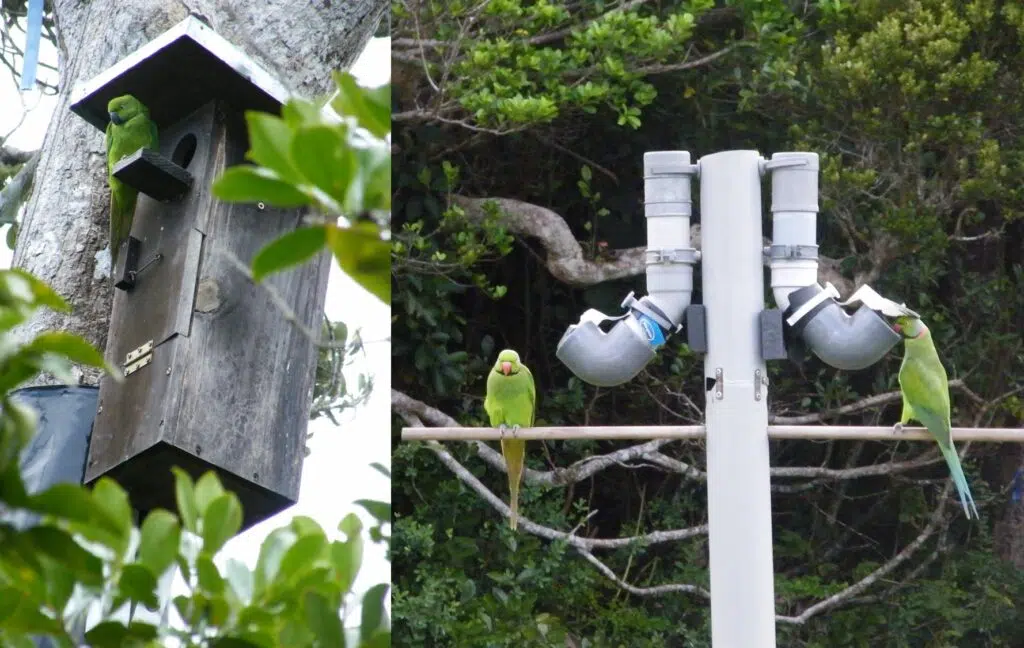
Nest boxes of all shapes and sizes were used to supplement natural nesting sites. However, in the beginning even the most sophisticated designs failed to attract the wild Echo Parakeets. Then something interesting happened: when the captive birds were released into the wild, they chose to use the familiar nest boxes. And the observant wild birds soon followed suit.
“The wild birds learned to use the nest boxes from the released captive birds”, explains Sion Henshaw, Fauna Manager for MWF. The same was true for supplementary food – the wild Echo Parakeets only started feeding on it once they saw the captive birds doing so.
More recently, MWF has begun to expand the range of the Echo Parakeets. They’ve established a breeding population in the Bambou Mountain Range and would like to reintroduce the species onto Réunion, an island where there is significantly more intact forest than on Mauritius. In talking to the experts at MWF, it becomes clear that none of these actions taken would have worked in isolation. But the captive birds acted as a linchpin, boosting population numbers and encouraging the wild birds to make the most of the conservationists’ support.
Step three: moving from one species to a whole ecosystem
The work of MWF and their partners to protect threatened species has also helped drive wider habitat restoration on Mauritius. As a direct result of the work to protect the Pink Pigeon, Echo Parakeet and Mauritius Kestrel, the government has set up a national park.
But while this support has led to two downlistings in 12 years, the Echo Parakeet remains globally threatened. Vikash Tatayah, Conservation Director, MWF, is quick to stress that forest degradation is one of the biggest issues facing Echo Parakeets and other endemic fauna: “Unfortunately, the forest quality is still declining on Mauritius, and for the foreseeable future we’ll have to give Echo Parakeets nest boxes, because efforts to try to restore forests won’t start reaping rewards for a long time.”
For now, MWF is working to reduce the amount of hands-on management needed to keep the population growing, and the Mauritian Government is committed to ensuring that the Echo Parakeet is here to stay. The 2019 IUCN Red List Update has just declared another parrot species – the Spix Macaw Cyanopsitta spixii – Extinct in the Wild, and 225 bird species are classed as Critically Endangered. But the Echo Parakeet proves that we can turn the tide on extinction.
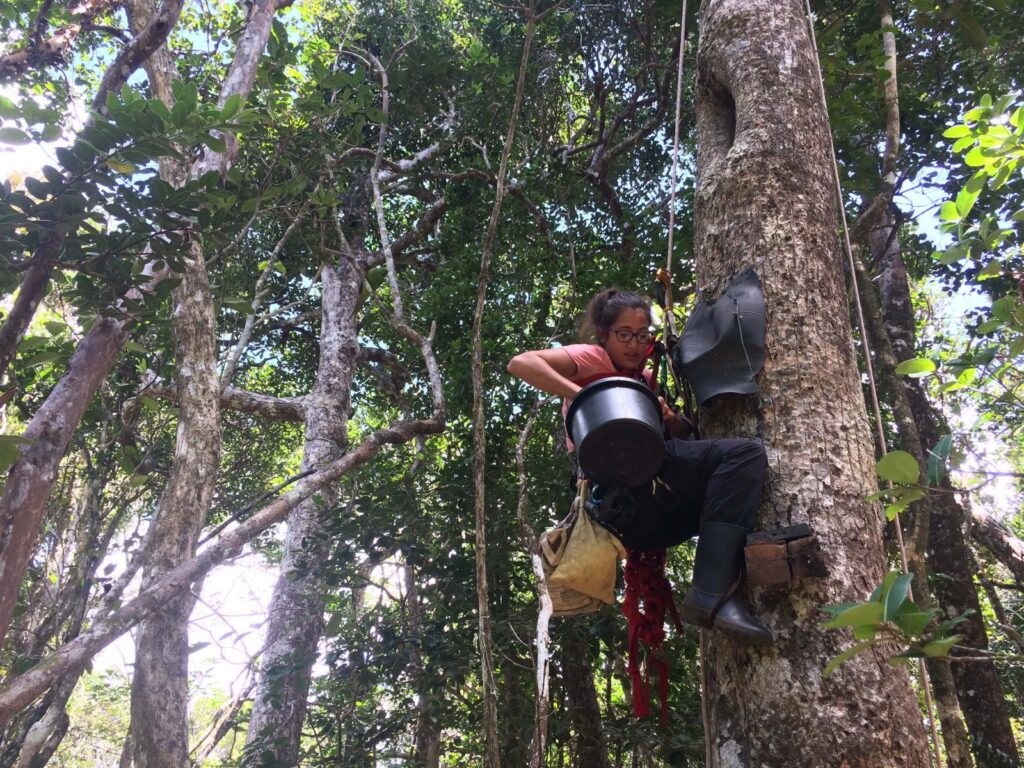
“225 bird species are classed as Critically Endangered. But the Echo Parakeet proves that we can turn the tide on extinction.“
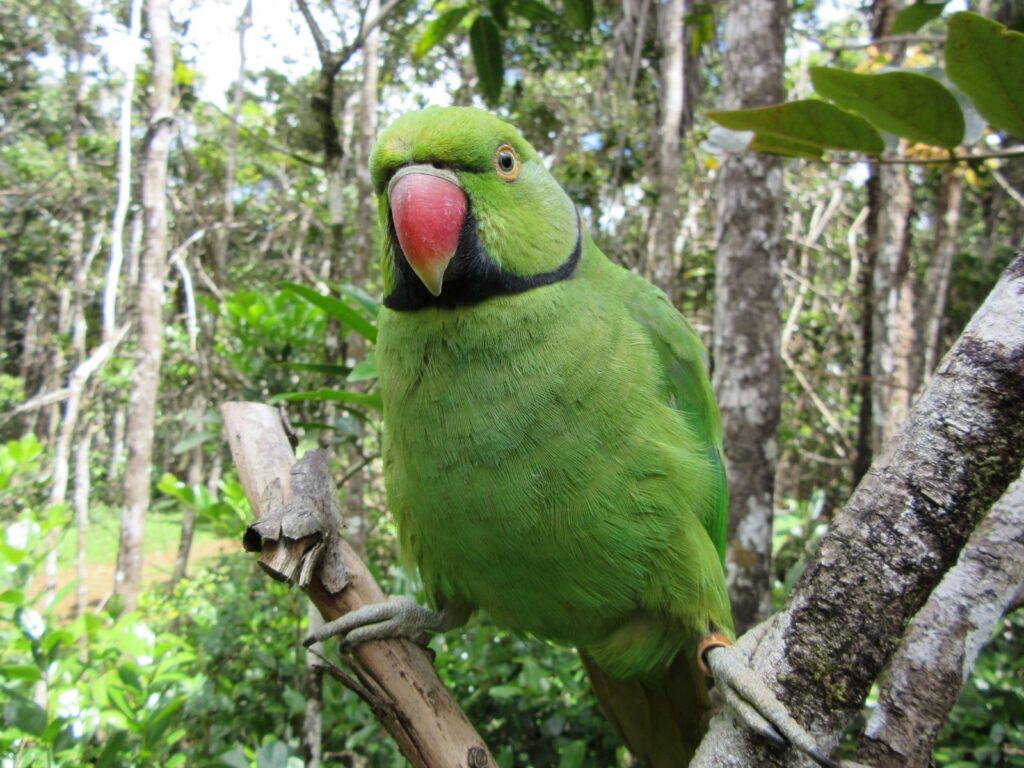
support our science/redlist banner
Stay up to date
Sign up to receive the latest bird conservation news. You’ll also receive updates about our projects, science and other ways to get involved including fundraising.
Thank you for your support, we are committed to protecting your personal information and privacy. For more information on how we use your data, please see our Privacy Policy. You can unsubscribe from emails at any time by using the link in the footer of any email from us.


